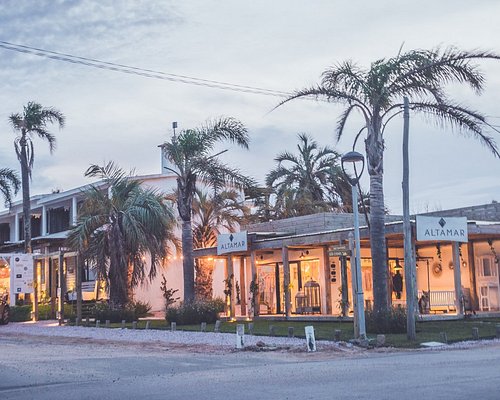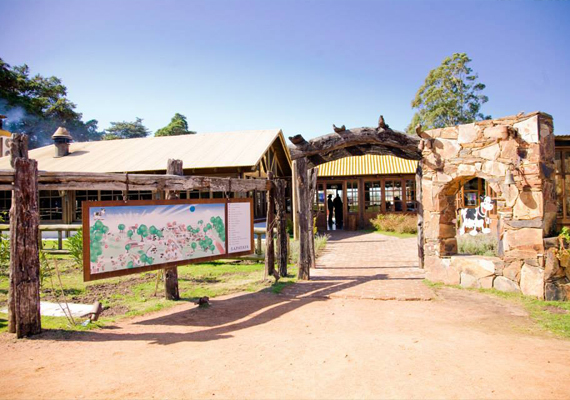Casapueblo
Built in 1958 by the Uruguayan artist Carlos Páez Vilaró, it
began as the artist's summer home and workshop, but now it
includes a museum, an art gallery, a cafeteria and a hotel.
From the sea, the white-stained cascade is almost reminiscent of
the Mediterranean: a bit Santorini and a bit Parc Guell in a
fantastical space exuding peace and poetry. But the artist used
to refer to the hornero's nest, a typical bird of Uruguay, when
referring to this type of construction. The building took 36
years to complete and has thirteen floors with terraces that
allow unique views of the sunset over the waters of the Atlantic
ocean. It also houses a tribute to Carlos Miguel, the artist's
son and one of the sixteen survivors of the of flight 571 of the
Uruguayan Air Force plane crash, which crashed in the Andes on
October 13, 1972.
"I built it [Casapueblo] as if it were a habitable sculpture,
without plans, especially at the instigation of my enthusiasm.
When the municipality asked me for the plans that I did not
have, an architect friend had to spend a month studying how to
decipher it." — Carlos Páez Vilaró.
Jose Ignacio
The José Ignacio Lighthouse is a symbol of the place created
with the aim of avoiding shipwrecks in the area. It was built in
1877 on the most salient and rocky end of the peninsula. Its
focal height is 32.5 meters, and has a light range of 9 miles.
Back then the only way to access the place was on horseback, in
carriages, or by sea. It wasn't until the 1920s that the first
houses were built along with the first grocery store. And in
1954 the frist road facilitating the access to the place was
built.
Surrounded by water, it is an ideal place for coastal and
shipping fishing, making the local gastronomy based on fresh
seafood. Nearby there is an area of summer farms that contain a
luxurious infrastructure and a series of secluded beaches at
your disposal that extend to the east, to Laguna Garzón.
Nowadays there is an area of summer villas that contain a
luxurious infrastructure and a series of secluded beaches at
your disposal that extend to the east, to Laguna Garzón.
La Barra
It started as an old fishing port and summer resort of the
inhabitants of the area. The originals buildings and
constructions were relatively modest. Its name derives from the
word "barra", which in Uruguay is used to designate the mouth of
a watercourse into the sea. With the inauguration in 1965 of the
bridge over the Maldonado stream, the town began to acquire the
current characteristics of a refined summer spot.
Locals believe that the place would have been a settlement and
refuge for pirates. Legend has it that a corsair named Francisco
Tournier would have buried a treasure on one of the islands of
the Maldonado stream. Many searched for this treasure without
success until the year 1888, when a group of explorers who were
looking for it, disappeared. Leaving the facilities and tools
without notifying the authorities, led to the assumption that
they had escaped after finding the treasure.
The area is characterized by its beaches, which allow all kinds
of sports activities (surfing, windsurfing, jetski, water
skiing, yachting, boating, fishing, etc.). Currently the place
has a very particular style, with colorful houses and an
important movement in the summer time derived from art
galleries, antique shops, restaurants, pubs and nightclubs. A
peculiarity of the place is that there are still small houses
inhabited by artisan fishermen.
La Pataia
This stablishment is the heart of one of the best and most
famous Dulce de Leche from Uruguay (named La Pataia). It is
located in the country side of Punta del Este and is the perfect
place to enjoy with the entire family.
It began its activities in November 1986. La Pataia is a farm
with a strong artisan tradition, where you can witness how the
milking is done in a systematic way and how the different
products that are later sold in the country are manufactured.
Other fun activities include riding in draft carriages,
horseback riding and approaching the pens with where children
can interact with farm animals and learn how to feed and take
care of them. There is a beautiful cantine, as well as a
confectionery where you can have a tea or coffee accompanied by
delicious desserts, with alfajores and dulce de leche of their
own production. You can also buy the products they make to take
home with you.



